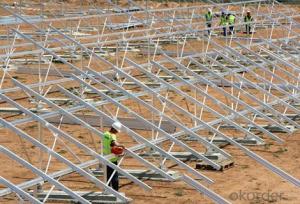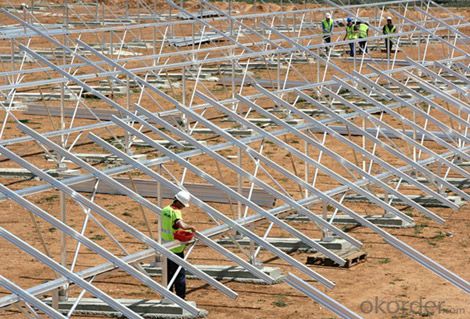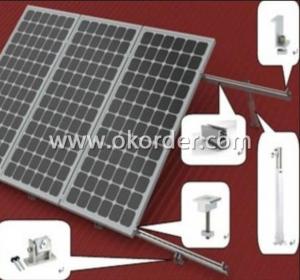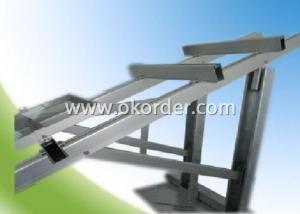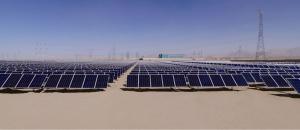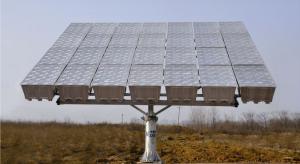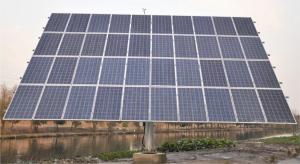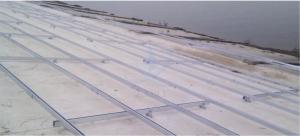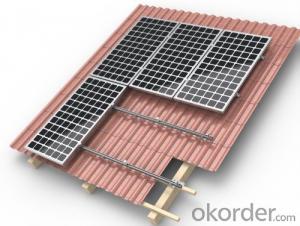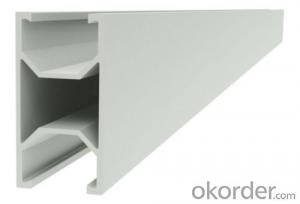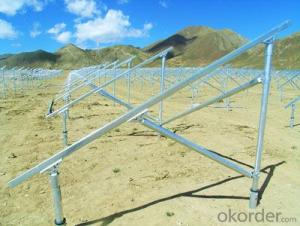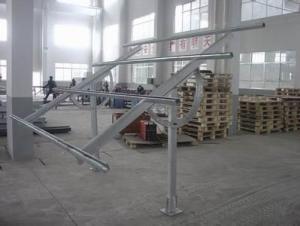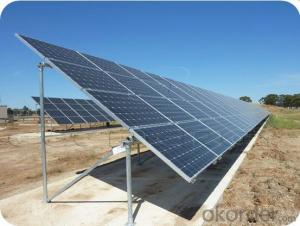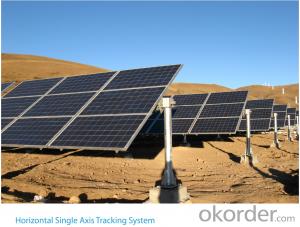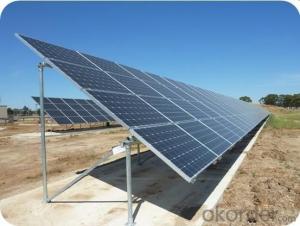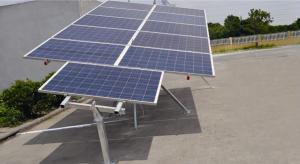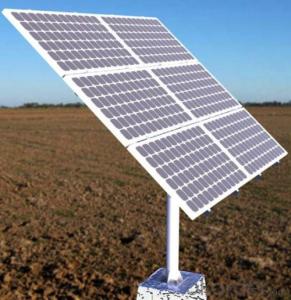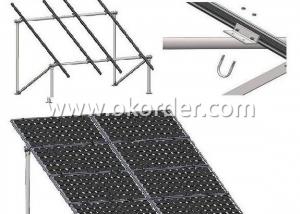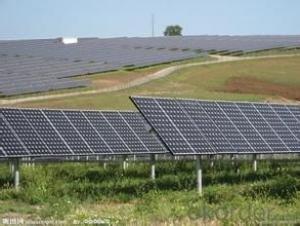Ballasted Solar Mounting System TT-DR-SP1
- Loading Port:
- Shanghai
- Payment Terms:
- TT OR LC
- Min Order Qty:
- -
- Supply Capability:
- 50万套 set/month
OKorder Service Pledge
OKorder Financial Service
You Might Also Like
PV Mounting brackets are special solar photovoltaic systemfor placing, installing, fixing the solar panel design. Generally materials arealuminum, steel structure, stainless steel. PV mounting products at groundmounting system, flat roof mounting system, adjustable angle roof rack system,inclined roof rack system, column bracket system.
The Ground Mounting System including concret basement sysytemand steel pipe sysytem, Titanergy provides total solution for flat or pitchedroof with patent products.On the basis of the given project data, specificnational standards and guidelines, Titanergy will calculate the completestructural analysis and create a complete project plan to make sure reliablestructural safety.We provide high quality HDG steel and aluminum products forthe ground mounting sysytem,witch can make sure the security and durability ofthe project.
Features and Advantages
n The rail bracket is easy to install, just use simple tools(eg, Allen wrench) can be easily installed. Rail connecting member can freelyadjust the length, the stent may be pre-installed on the roof, and thenappropriately adjusted according to the size of the solar panel.
n The combination of strong, aluminum rails and card blocks fora variety of venues and a variety of materials roofs (such as metal, ceramicand other kinds of tile surface)
n Component compatibility, and rail can meet PV modules fromdifferent manufacturers.
n accuracy, the length of the rail to the nearest millimeter,the construction process, not because of the length is too long or too shortfor the second cut.
n flexible assembly, rail hooks can adjust the spacing modulearray and tile has been installed successfully address the uneven roofconstruction led to difficult problems.
n design standards, product design and development process instrict accordance with GB, the German standards and other internationalstandards to ensure products reach the world advanced level.
n Quality assurance, the stent main material is high-qualityaluminum and stainless steel, effectively prevent corrosion of oxidation.Products can be recycled, reducing environmental pollution.
n Carried out strictly according to the current specificnational standards
n Perfectly optimized components and complete structuralanalysis for the sysytem
n High corrosion resisitance ensure the stability and highdurability
n Total test and certification make sure the high quality ofthe products
n Maximum pre-assembled in factory,quick mounting onsite,timesaving
10-year durability warranty
Technical Data
n Design Period:25 years
n Installation Site: Open area
n Array Angle:10°~60°
n ModuleType:Framed or unframed
n Material:Q235B,Al 6063-T5,Al 6005-T5,StainlessSteel A2-70
n Coating:HDG/Anodised
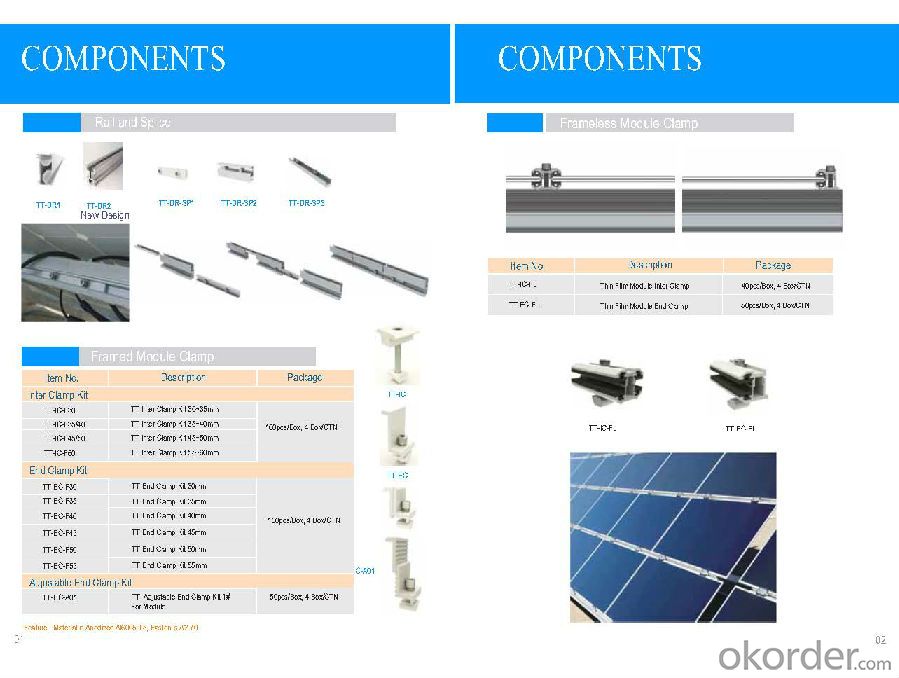
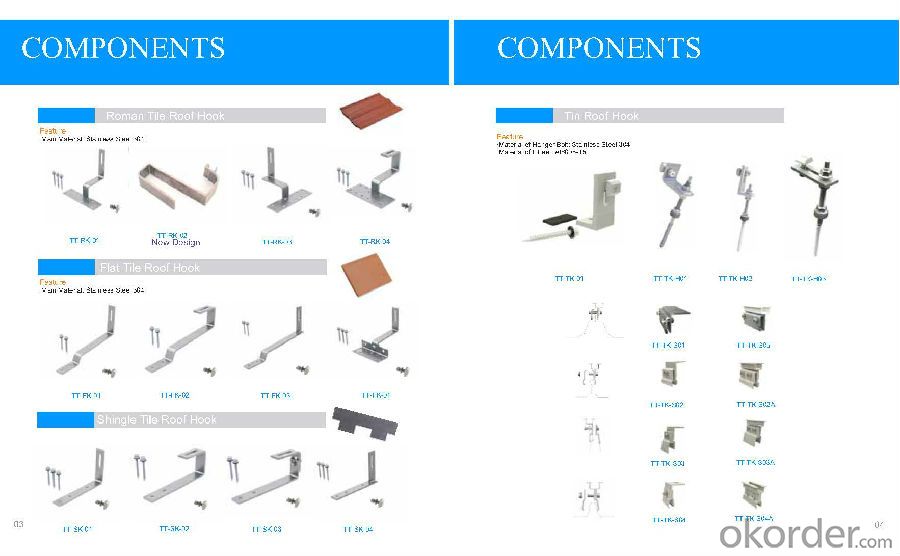
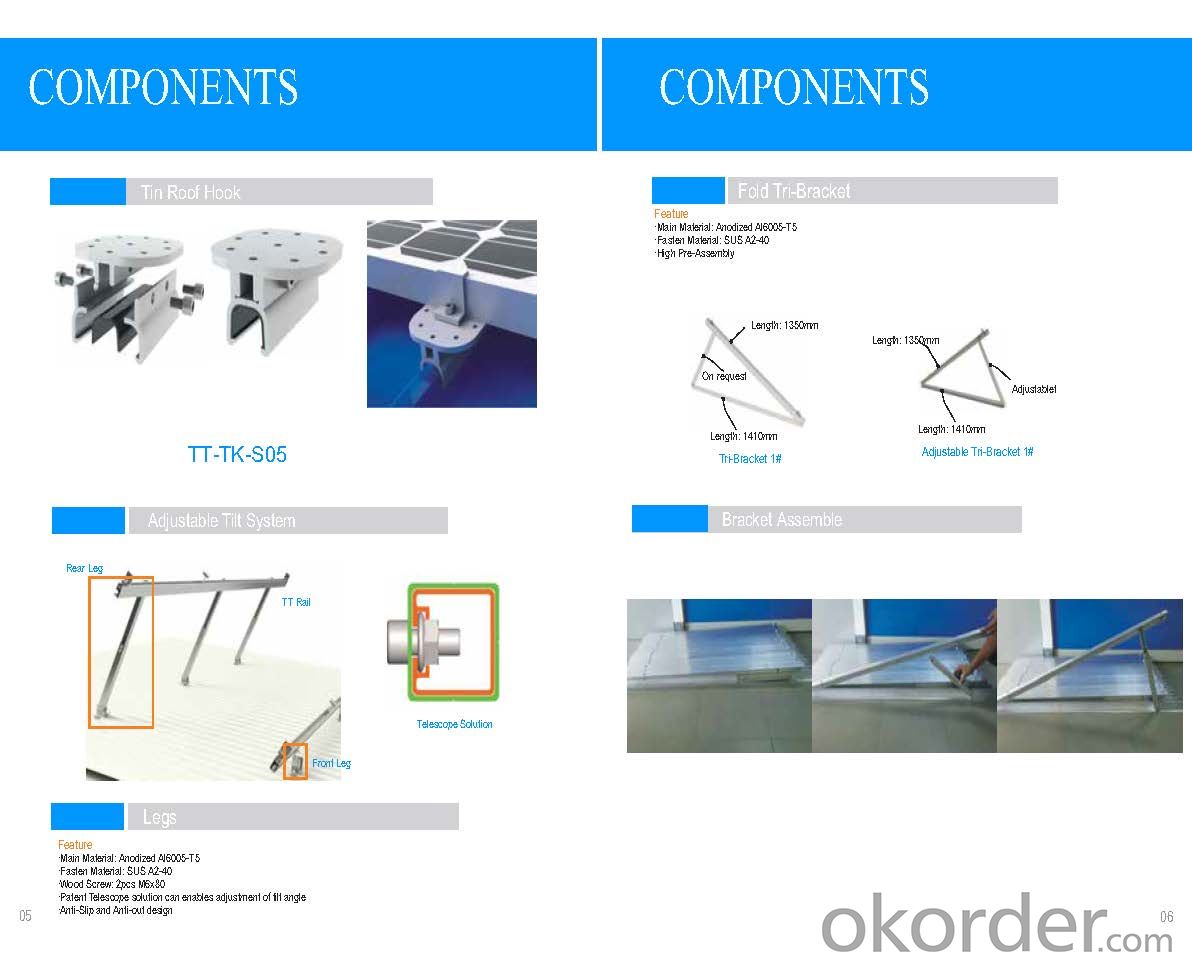
- Q: Are there any specific requirements for installing a solar mounting system on a rooftop with rooftop safety rails?
- Yes, there are specific requirements for installing a solar mounting system on a rooftop with rooftop safety rails. The mounting system needs to be compatible with the existing safety rails and should not compromise their integrity or functionality. Additionally, it is important to ensure that the solar panels are securely mounted and do not pose any safety risks to individuals accessing or working on the rooftop. Compliance with local building codes and regulations is crucial to ensure a safe and successful installation.
- Q: Can a solar mounting system be used with solar canopies?
- Yes, a solar mounting system can be used with solar canopies. The solar mounting system provides the necessary support and structure for the solar panels, while the solar canopies offer additional benefits such as shade and protection. Combining both systems allows for efficient energy generation and maximizes the use of available space.
- Q: Are there different types of solar mounting systems?
- Yes, there are several different types of solar mounting systems available. Some common types include roof-mounted systems, ground-mounted systems, pole-mounted systems, and carport-mounted systems. Each type has its own unique features and installation requirements, allowing for flexibility in choosing the most suitable option based on factors like space availability, site conditions, and aesthetic preferences.
- Q: Can a solar mounting system be recycled?
- Yes, a solar mounting system can be recycled. Most solar mounting systems are made of aluminum or steel, which are highly recyclable materials. These materials can be melted down and reused to manufacture new products, reducing the need for virgin materials and minimizing waste. Additionally, some manufacturers offer take-back programs or partnerships with recycling facilities to ensure proper disposal and recycling of solar mounting systems at the end of their lifespan.
- Q: Can a solar mounting system be used in areas with solar incentives for libraries?
- Yes, a solar mounting system can be used in areas with solar incentives for libraries. These incentives provide financial support and incentives for libraries to adopt solar energy systems, making it a viable option for libraries to install solar panels using a mounting system.
- Q: Can a solar mounting system be installed on a hotel or hospitality establishment?
- Yes, a solar mounting system can be installed on a hotel or hospitality establishment. In fact, many hotels and hospitality establishments are increasingly adopting solar energy as a sustainable and cost-effective solution for their energy needs. Solar mounting systems can be installed on rooftops, parking lots, or any available open space to generate clean and renewable electricity, reducing the property's carbon footprint and energy costs. Additionally, the installation of solar panels can also enhance the establishment's green image and attract environmentally-conscious guests.
- Q: Are there ground-mounted solar mounting systems available?
- Yes, there are ground-mounted solar mounting systems available. These systems are designed to securely hold and position solar panels on the ground, allowing for efficient and effective solar energy generation. They are commonly used in areas where roof space is limited or unsuitable for solar panel installation.
- Q: Can solar mounting systems be installed on buildings with unconventional roof materials?
- Yes, solar mounting systems can be installed on buildings with unconventional roof materials. There are various types of solar mounting systems available that can be customized to accommodate different roof materials, including unconventional ones. These systems are designed to ensure proper installation and secure attachment to the roof, regardless of the material used.
- Q: Can a solar mounting system be used with solar-powered satellites?
- Yes, a solar mounting system can be used with solar-powered satellites. Solar mounting systems are designed to securely and efficiently install solar panels, and they can be adapted to fit the specific needs and requirements of solar-powered satellites. The mounting system allows the solar panels to be positioned and oriented correctly to capture maximum sunlight for power generation in space.
- Q: Can a solar mounting system be used with solar ground mounts?
- Yes, a solar mounting system can be used with solar ground mounts. A solar mounting system is designed to securely install solar panels, and ground mounts are one of the options available for installing solar panels on the ground.
Send your message to us
Ballasted Solar Mounting System TT-DR-SP1
- Loading Port:
- Shanghai
- Payment Terms:
- TT OR LC
- Min Order Qty:
- -
- Supply Capability:
- 50万套 set/month
OKorder Service Pledge
OKorder Financial Service
Similar products
Hot products
Hot Searches
Related keywords
